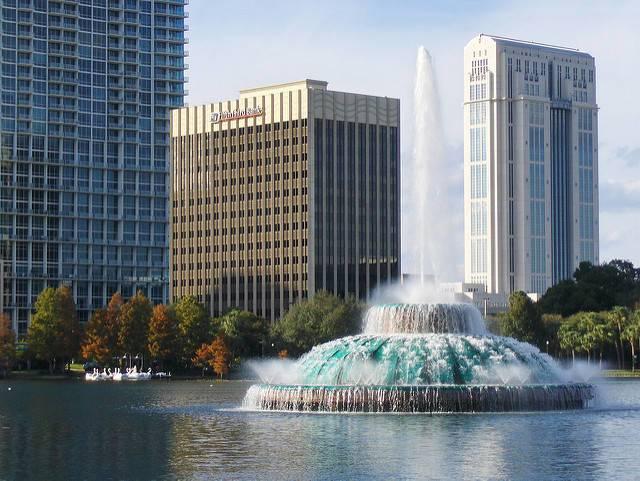
Earlier this week, the Sierra Club announced that the Orlando City Commission unanimously approved a resolution mandating that the central Florida city run 100 percent on renewables by 2050.
Orlando joins other “smart cities” that have enacted similar pledges, including Columbia, South Carolina; Atlanta, Georgia; and San Diego, California.
The Sierra Club welcomed Tuesday’s news, noting that Orlando is the 40th city to join its “Ready for 100%” renewables campaign.
As Orlando joins the roster of municipalities and states that say they will do what they can to transition to a clean energy economy, many civic leaders remind citizens that more than 80 percent of all Americans live in towns and cities. With the Trump White House’s exit from the Paris climate agreement, it behooves the private sector and other governments to take the lead on finding ways to mitigate climate change risks.
Nevertheless, while these commitments sound impressive, are they backed up by action? TriplePundit reached out to the Sierra Club, and their answer was an overall “yes.”
“As more and more cities commit to transition to 100% clean energy, local leaders have the potential to reshape not only how they power their communities,” wrote a Sierra Club spokesperson in an email to 3p, “but how energy is generated on a state and even regional level.”
One example to which the Sierra Club pointed was Georgetown, Texas. In 2012, the city of 67,000, located 30 miles north of Austin, locked in contracts to purchase solar and wind power from across Texas at a fixed negotiated rate for over 20 years. City officials claim the shift to 100 percent renewables has been more reliable energy costs for both local residents and businesses.
Cities much larger than Georgetown may have more complicated bureaucracies in the way and more stakeholders to placate, but that Texas city’s success still provides ideas for a template from which other municipalities can learn as they shift away from fossil fuels. Of course, drafting such a commitment starts with putting the kibosh on fossil fuels in the first place. In Portland, Oregon, plans had been on the drawing board to build two natural gas power generation plants. But in the meantime, the City of Portland and Multnomah County committed to a 100 percent renewables pledge by 2050; the local utility eventually backed off those plans as the city and county both made it clear that such projects were a roadblock to their future clean energy goals.
Portland has joined other cities such as Salt Lake City, Utah, which are mapping out their long-term plans towards powering their cities with renewables. Therefore, as far as actually staff developing strategies to meet these ambitious goals, the Sierra Club can technically say that yes, these plans are backed up by brains.
But what about funding?
Yes, renewables are become cheaper while scaling up fast, but plenty of investment is still required to power cities by renewables instead of using coal or natural gas. The question of funding, however, depends on the city. In St. Petersburg, Florida, another city with a 100 percent renewables goal, officials are using $250,000 of a $1 million settlement from the BP oil spill to craft an “integrated sustainability action plan.” Other funds will go towards an energy efficiency audit and a “vulnerability assessment” modeling program to gauge potential risks from hurricanes and sea level rise. Left unanswered is how St. Petersburg will actually fund the transition from fossil fuels to clean energy.
Meanwhile, on the west coast, San Diego developed a legally binding commitment to run on 100 percent renewables over the next two decades, a plan the Sierra Club describes as one of the bolder clean energy plans in the country. The city is evaluating several options to achieve that goal. So far, the city appears to be leaning toward the adoption of a community choice aggregation plan, by which San Diego would operate as a utility, as it purchases wholesale power directly from producers. A recent report issued earlier this summer concluded community choice aggregation could assist San Diego achieve its clean energy goals while reducing utility costs for businesses and consumers in the future.
Concrete plans or fuzzy math? The next several months should give us more answers as cities fight the headwinds to move towards a low-carbon economy despite the agenda currently touted in Washington, DC.
Image credit: Joe Shlabotnik/Flickr

Leon Kaye has written for 3p since 2010 and become executive editor in 2018. His previous work includes writing for the Guardian as well as other online and print publications. In addition, he's worked in sales executive roles within technology and financial research companies, as well as for a public relations firm, for which he consulted with one of the globe’s leading sustainability initiatives. Currently living in Central California, he’s traveled to 70-plus countries and has lived and worked in South Korea, the United Arab Emirates and Uruguay.
Leon’s an alum of Fresno State, the University of Maryland, Baltimore County and the University of Southern California's Marshall Business School. He enjoys traveling abroad as well as exploring California’s Central Coast and the Sierra Nevadas.














